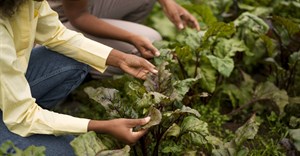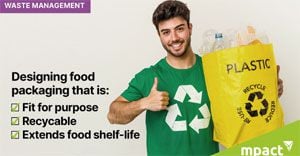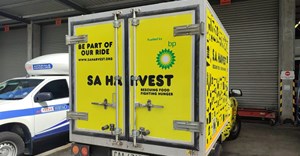
Related



SMME Food Safety Compliance South Africa: A guide for SMMEs supplying to large retailers
Phumi (PJ) Mhlongo 7 Oct 2024




Logistics industry urged to play a role in addressing food waste
Marietjie Brown 2 Nov 2023


Edible food makes up approximately 1.3 gigatonnes of this (one gigatonne is a billion tonnes). For comparison, one tonne of wasted food is about the equivalent of 127 large plastic bin bags. This not only represents a phenomenal loss in terms of food that could feed people, but also a loss in resources such as water, labour power, soil nutrients, transportation energy and so forth.
Recent analysis shows that about one-third of the edible food that is wasted globally comes before the farm gate and about one fifth comes from people’s plates and refrigerators. This means that just under half of all edible food that becomes waste does so during manufacturing, distribution and retail.
Food manufacturers tolerate about 5% waste within their food processes under normal production. And in the UK alone, there are more than 8,000 food producers operating at 9,500 production sites.
One main reason food is wasted within the manufacturing process is due to what some researchers refer to as inefficiencies. But we need to consider where these inefficiencies lie, and if they are avoidable.
For example, on an assembly line producing ready meals, there may be several machines operating to produce different parts of the meal. If something happens to one of the machines, rather than stop the whole system while the machine is reset, the food keeps coming but is redirected into waste. It is more efficient both in terms of both money and food resources to lose this food than it is to stop the production for a few minutes. So what is technically inefficient may also be a food and labour efficiency.
In addition, there is always food loss associated with machinery start-up. Volumes described on the label are calibrated based on normal speed of production, and it takes a few minutes for the machinery to meet this speed. As a result, the first few pallets of packaged food are also not able to be sold because the volume in each package is less than the calibrated standard. This is why stopping the production line when faults occur is actually more wasteful: restarting produces more unsellable edible food than redirection does.
And if, for example, a manufacturer produces something associated with a food allergy, like breakfast cereal with nuts, and they want to switch the line to produce a cereal without nuts, the production line must be run for a significant time with the new product before it is actually nut free.
New product development also creates a lot of potential food waste because the production processes must be calibrated and training carried out to ensure that when high volumes are produced the taste and quality matches what was developed at a smaller scale in the testing kitchen. Machinery must also be run for some time to ensure volumes are correct, packaging is printing properly and so forth.
Due to increasing public concern about the scale of this waste, surplus redistribution is becoming more common. But it is a comparatively new activity and so still somewhat experimental. There are many issues to work out.
It is true that new tax policy, regulation and industry standards might encourage food manufacturers to help feed people with this surplus food, rather than waste it or send to anaerobic digestion. Despite this, focusing on regulations and policies is not enough to ensure that this food can reach mouths.
This is because movement of surplus requires a lot of coordination between a whole range of people and organisations. Surplus food, for example, cannot be accepted by a food redistributor if there are not enough people in the warehouse to unload the food from the delivery truck. Machinery is needed to move and in some cases repackage the food so that contents match labelling. When volumes are particularly large, spaces are needed to store and break down pallets into amounts that a community cafe, food pantry, or children’s holiday or breakfast club can store and use while the food is still good.
Surplus food distribution has a number of other challenges not faced in a commercial system. A food manufacturer can throw money at a problem if there is a financial benefit. But those operating in the surplus system are generally reliant on unpredictable resources and face problems that do not necessarily have a financial return on the investment. They often also rely on volunteers to fill their labour needs. Food arriving in the surplus system from food manufacturers is very unpredictable both in terms of type and quantity. Food redistributors must therefore work out how best to redistribute the food under time pressure.
This is not to say the problem is impossible. Those engaged with moving surplus along for social good rather than financial gain are working out new ways to use technology to communicate food availability. Some are experimenting with blockchain technology to encourage voluntary participation and others to facilitate donations from individuals and corporations.
Meanwhile, organisations like the FareShare, The Bread and Butter Thing, His Church, City Harvest London, The Felix Project, The Real Junk Food Project, Community Shop and others are experimenting with different models for collecting and distributing this food.
We are currently in a situation where there are hungry people in places where food is abundant. But we haven’t yet worked out how best to organise the surplus food distribution system or under what circumstances each method works best.
Consumers have a role to play in this. We need food producers to remain committed and engaged in finding ways to redistribute their surplus and consumer pressure is influential. Food redistributors are often not the first place where people think to volunteer, but regular and committed volunteers are needed as are financial donations. Food is not waste until its wasted – and we all can contribute to moving it along.

The Conversation Africa is an independent source of news and views from the academic and research community. Its aim is to promote better understanding of current affairs and complex issues, and allow for a better quality of public discourse and conversation.
Go to: https://theconversation.com/africa